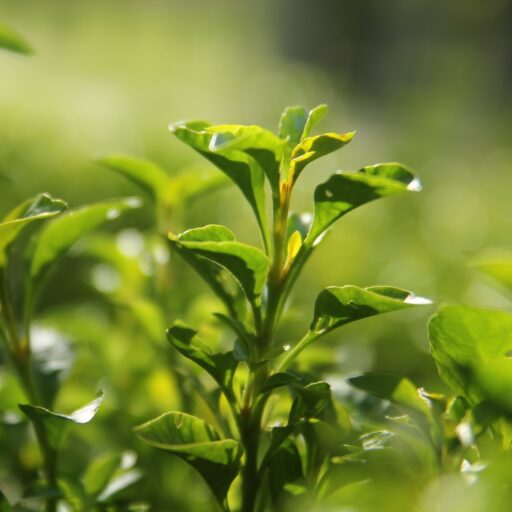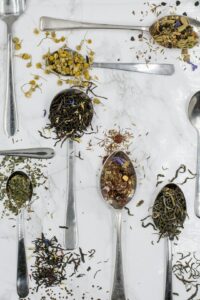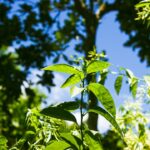Support our educational content for free when you purchase through links on our site. Learn more
[2023] What Environment Does Tea Need to Grow? The Ultimate Guide
Tea, the beloved beverage enjoyed by millions around the world, has a fascinating journey from plant to cup. But have you ever wondered what environment tea needs to grow? In this comprehensive guide, our team of expert tea growers at Growing Teas™ will take you through everything you need to know about the ideal conditions for tea cultivation. From the climate and soil requirements to the harvesting and production process, we’ve got you covered. So grab a cup of your favorite tea and let’s dive in!
Table of Contents
- Quick Answer
- Quick Tips and Facts
- Background: The Story of Tea
- Ideal Environment for Tea Growth
- Tea Plant Varieties
- Tea Cultivation: From Planting to Harvesting
- Tea Production Process
- FAQ
- Conclusion
- Recommended Links
- Reference Links
Quick Answer
Tea plants thrive in cooler climates with ample rainfall and prefer acidic soils. They can be cultivated at various altitudes, ranging from sea level to altitudes of 7,000 feet. The main tea-producing regions include China, India, Sri Lanka, and Kenya. Tea plants require a minimum age of three years before their leaves can be harvested for tea production. The six main types of true teas are white, green, oolong, yellow, black, and pu-erh, each with its own unique production process.
Quick Tips and Facts
Before we delve into the details, here are some quick tips and interesting facts about tea cultivation:
- Tea plants prefer cooler climates with temperatures ranging from 50°F to 86°F (10°C to 30°C).
- They require a minimum of 40 inches (1,000 mm) of rainfall per year.
- Tea plants thrive in well-drained acidic soils with a pH level between 4.5 and 6.0.
- The two principal varieties of the tea plant used in cultivation are Camellia sinensis var. sinensis and C. sinensis var. assamica.
- China, India, Sri Lanka, and Kenya are the major tea-producing countries.
- Tea plants can be grown at different altitudes, from sea level to altitudes of 7,000 feet (2,100 meters).
- Tea leaves are harvested by hand to ensure the highest quality.
- The oxidation process plays a crucial role in creating different types of tea.
- Flavored teas are created by infusing herbal tisanes with true tea leaves.
Now that we have a quick overview, let’s explore the ideal environment for tea growth in more detail.
Background: The Story of Tea
Tea has a rich history that dates back thousands of years. Legend has it that tea was discovered in ancient China by Emperor Shen Nong in 2737 BCE. Since then, tea has become an integral part of various cultures and has gained popularity worldwide.
Tea is derived from the leaves of the Camellia sinensis plant, a member of the Theaceae family. This evergreen shrub is native to East Asia and is cultivated in different regions across the globe. The leaves of the tea plant undergo various processes to produce the different types of tea we enjoy today.
Ideal Environment for Tea Growth
Tea plants have specific requirements when it comes to their growing environment. Let’s take a closer look at the key factors that contribute to the ideal conditions for tea cultivation:
Climate
Tea plants thrive in cooler climates, where temperatures range from 50°F to 86°F (10°C to 30°C). They prefer a moderate climate with a good balance of sunlight and shade. Extreme heat or cold can negatively impact tea plant growth and affect the quality of the leaves.
Rainfall
Ample rainfall is essential for tea plants to flourish. They require a minimum of 40 inches (1,000 mm) of rainfall per year. This ensures that the plants receive sufficient moisture for healthy growth and leaf development. In regions with lower rainfall, irrigation systems are used to supplement the water supply.
Soil
Tea plants have specific soil requirements. They prefer well-drained acidic soils with a pH level between 4.5 and 6.0. Acidic soils provide the necessary nutrients for tea plant growth and contribute to the unique flavors and characteristics of the tea leaves. Soil fertility is also crucial, and organic matter is often added to enhance the soil’s nutrient content.
Altitude
Tea plants can be cultivated at various altitudes, ranging from sea level to altitudes of 7,000 feet (2,100 meters). Different altitudes contribute to the flavor profiles of the tea leaves. Higher altitudes often result in slower growth and produce teas with more delicate flavors, while lower altitudes can yield teas with bolder and robust flavors.
Light and Shade
Tea plants require a good balance of sunlight and shade. While they need sunlight for photosynthesis and growth, excessive exposure to direct sunlight can scorch the leaves. Partial shade helps protect the plants from extreme heat and maintains the quality of the leaves.
Tea Plant Varieties
There are two principal varieties of the tea plant used in tea cultivation: Camellia sinensis var. sinensis and C. sinensis var. assamica. These varieties have distinct characteristics and are cultivated in different regions.
-
Camellia sinensis var. sinensis: This variety is native to China and is known for its smaller leaves and delicate flavors. It is commonly grown in regions such as Fujian, Zhejiang, and Anhui.
-
Camellia sinensis var. assamica: This variety is native to the Assam region of India and is characterized by its larger leaves and robust flavors. It is primarily cultivated in India, Sri Lanka, and parts of Africa.
Each variety has its own unique flavor profile, and the growing conditions play a significant role in shaping the taste of the tea leaves.
Tea Cultivation: From Planting to Harvesting
Tea cultivation is a meticulous process that requires careful attention to detail. Here’s a step-by-step overview of the tea cultivation process:
-
Site Selection: Choosing the right location is crucial for tea cultivation. Factors such as climate, altitude, soil type, and access to water sources are considered when selecting a site for tea plantation.
-
Planting: Tea plants are typically propagated from seeds or cuttings. They are planted in well-prepared soil and spaced out to allow for proper growth and airflow.
-
Pruning and Maintenance: Regular pruning helps shape the tea plants and promotes healthy growth. Weeds and pests are managed through organic methods to ensure the plants remain healthy.
-
Harvesting: Tea leaves are harvested when they reach the desired maturity. Hand plucking is the preferred method to ensure the highest quality leaves are selected. Only the top two leaves and a bud are harvested, as they contain the most desirable flavors.
-
Processing: After harvesting, the tea leaves undergo various processing steps depending on the desired type of tea. These steps include withering, rolling, oxidation, and drying. Each type of tea has its own unique production process, which contributes to its distinct flavor and characteristics.
-
Packaging and Distribution: Once the tea leaves are processed, they are packaged and distributed to tea wholesalers, retailers, or directly to consumers. Proper packaging ensures the tea remains fresh and retains its flavors.
Tea Production Process
The tea production process involves several steps, each of which contributes to the final product’s flavor and characteristics. Let’s explore the main steps involved in tea production:
-
Withering: Freshly harvested tea leaves are spread out to wither, allowing them to lose moisture and become pliable. This step prepares the leaves for the next stage of processing.
-
Rolling: The withered leaves are rolled to break down the cell walls and release the enzymes responsible for oxidation. Rolling also helps shape the leaves and enhances their flavors.
-
Oxidation: Oxidation is a crucial step in tea production. The level of oxidation determines the type of tea produced. White and green teas undergo minimal oxidation, while oolong and black teas undergo partial or full oxidation, respectively. Oxidation brings out the unique flavors and aromas of each type of tea.
-
Drying: After oxidation, the tea leaves are dried to halt the oxidation process and remove any remaining moisture. Drying helps preserve the flavors and aromas of the tea.
-
Sorting and Grading: Tea leaves are sorted and graded based on their size, shape, and quality. This ensures consistency in the final product and helps buyers make informed choices.
-
Packaging: The final step involves packaging the tea in various forms, such as loose leaf tea, tea bags, or compressed tea cakes. Proper packaging helps maintain the tea’s freshness and quality.
FAQ
What is the best environment for growing tea?
The best environment for growing tea includes cooler climates with temperatures ranging from 50°F to 86°F (10°C to 30°C). Tea plants thrive in regions with ample rainfall, at least 40 inches (1,000 mm) per year. They prefer well-drained acidic soils with a pH level between 4.5 and 6.0. Tea plants can be cultivated at different altitudes, from sea level to altitudes of 7,000 feet (2,100 meters).
Read more about “… How Much Tea Can You Get From One Tea Plant?”
What conditions do tea plants like?
Tea plants prefer moderate climates with a good balance of sunlight and shade. They require a minimum of 40 inches (1,000 mm) of rainfall per year and well-drained acidic soils. Tea plants can tolerate a wide range of altitudes, but they thrive in cooler regions with temperatures between 50°F and 86°F (10°C to 30°C).
Can you grow tea tree in the USA?
Yes, tea can be grown in certain regions of the United States. The ideal regions for tea cultivation in the USA include parts of Hawaii, the Pacific Northwest, and the Southern states. These regions provide the necessary climate and soil conditions for tea plant growth.
Where do tea plants thrive?
Tea plants thrive in various regions across the globe. The major tea-producing countries include China, India, Sri Lanka, and Kenya. Each region has its own unique tea varieties and flavor profiles.
Conclusion
Tea cultivation is a fascinating process that requires the right environment and careful attention to detail. Tea plants thrive in cooler climates with ample rainfall and prefer well-drained acidic soils. The two principal varieties of the tea plant, Camellia sinensis var. sinensis and C. sinensis var. assamica, are cultivated in different regions, each contributing to the diverse world of tea flavors. From planting to harvesting and the intricate production process, every step plays a crucial role in creating the teas we love. So the next time you enjoy a cup of tea, take a moment to appreciate the journey it took from the tea gardens to your cup.
Recommended Links
- [2023] How Much Tea Can You Get From One Tea Plant?: Read Article
- Green Tea Cultivation
- Herbal Tea Planting
- Tea Plant Varieties
- Soil and Climate for Tea
Reference Links
- How Is Tea Grown? The Story of Tea From Harvest to Cup
- Camellia sinensis
- Tea Production Process
- Tea Cultivation
Remember, the environment plays a crucial role in tea cultivation, shaping the flavors and characteristics of the final product. Whether you’re a tea enthusiast or considering growing your own tea, understanding the ideal conditions for tea growth is essential. So go ahead, explore the world of tea, and savor the flavors that nature has to offer!






